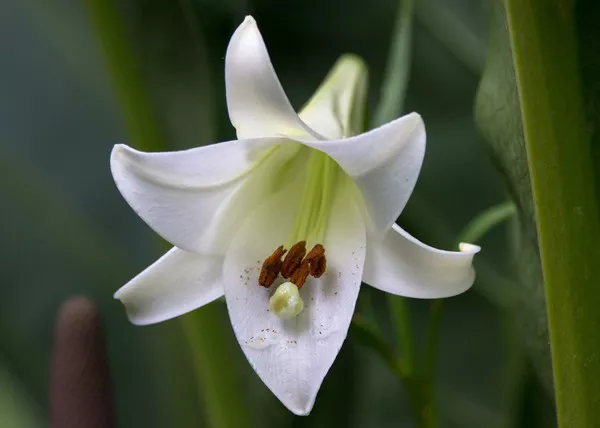Kale, with its numerous health benefits and versatility in various dishes, has become a popular leafy green in many home gardens and commercial farms. However, like any other crop, kale is susceptible to pests that can quickly damage or even decimate the entire harvest. In this comprehensive guide, we will explore effective methods to protect kale from pests, ensuring a healthy and bountiful yield while maintaining environmentally friendly practices.
1. Understanding Kale Pests
Before diving into protection strategies, it’s essential to familiarize ourselves with the common pests that pose a threat to kale:
Aphids: Small, soft-bodied insects that suck the sap from kale leaves, causing stunted growth and distorted foliage.
Cabbage Worms: The larvae of cabbage butterflies, which chew on kale leaves, leaving behind ragged holes.
Flea Beetles: These tiny beetles feed on kale leaves, creating small, round holes and giving them a “shot-hole” appearance.
Slugs and Snails: These mollusks consume kale leaves and can quickly devastate a young crop.
Cutworms: The larvae of certain moth species, cutworms cut through the base of young kale plants, causing them to topple.
2. Prevention Strategies
Preventing pest infestations in the first place is the most sustainable approach to protecting kale. Implement the following preventive measures:
Crop Rotation: Avoid planting kale or other Brassicas in the same spot year after year, as this reduces the buildup of pest populations.
Healthy Soil Management: Maintain fertile soil with proper drainage and pH levels, as healthy plants are better equipped to resist pests.
Companion Planting: Grow repellent plants like marigold, garlic, and onions alongside kale to deter pests.
Physical Barriers: Use row covers or netting to create a physical barrier that prevents pests from reaching the kale plants.
3. Natural Pest Control
Embracing nature’s own defense mechanisms can effectively control pests without resorting to harmful chemicals:
Beneficial Insects: Attract predators like ladybugs, lacewings, and parasitic wasps, which feed on common kale pests.
Birds: Encourage birds in your garden as they help control caterpillar and insect populations.
Traps: Set up beer traps for slugs and snails or pheromone traps for specific insect pests.
Nematodes: Beneficial nematodes can be introduced to the soil to target and control soil-dwelling pests.
4. Organic Pest Control
Organic pest control methods use natural substances and processes to deter or eliminate pests:
Neem Oil: Neem oil, derived from neem tree seeds, is a natural insecticide that disrupts the feeding and breeding of pests.
Diatomaceous Earth: This powder is composed of fossilized diatoms and acts as a mechanical pesticide, dehydrating pests upon contact.
Soap Sprays: Homemade insecticidal soaps made from mild dish soap can be effective against soft-bodied pests like aphids.
Chili Pepper Spray: A mixture of water and chili pepper can deter pests with its spicy scent.
5. Integrated Pest Management (IPM)
IPM is a holistic approach that combines various pest control strategies:
Monitoring: Regularly inspect kale plants for signs of pests and identify the specific threats present.
Threshold Levels: Set action thresholds to determine when pest populations require intervention.
Selective Pesticides: If necessary, use targeted, low-toxicity pesticides to minimize harm to beneficial insects.
Cultural Controls: Implement preventive strategies, as discussed earlier, to reduce the need for chemical intervention.
6. Timely Harvesting
Harvesting kale at the right time can prevent pest problems:
Young Leaves: Begin harvesting outer leaves while they are still tender and young, as they are less appealing to pests.
Remove Infested Leaves: Promptly remove any leaves that show signs of pest damage to prevent further spread.
7. Clean Garden Practices
Maintaining a clean garden environment discourages pests from taking up residence:
Fall Cleanup: Clear out garden debris and dead plant matter in the fall to eliminate overwintering sites for pests.
Weed Management: Regularly remove weeds, which can host and provide a haven for pests.
Sanitization: Disinfect garden tools and equipment to prevent the spread of diseases and pests.
8. Education and Awareness
Knowing how to identify and differentiate between beneficial insects and pests is essential for effective pest management. Educate yourself and your gardening team about the various insects found in your region.
Conclusion
Protecting kale from pests requires a proactive and multifaceted approach. By implementing preventive measures, encouraging natural predators, using organic pest control methods, and practicing integrated pest management, you can ensure a thriving kale crop without resorting to harmful chemicals. Remember that a healthy and diverse garden ecosystem is the key to maintaining the balance between pests and beneficial insects. Embrace these practices to enjoy a bountiful kale harvest while preserving the environment for future generations.


